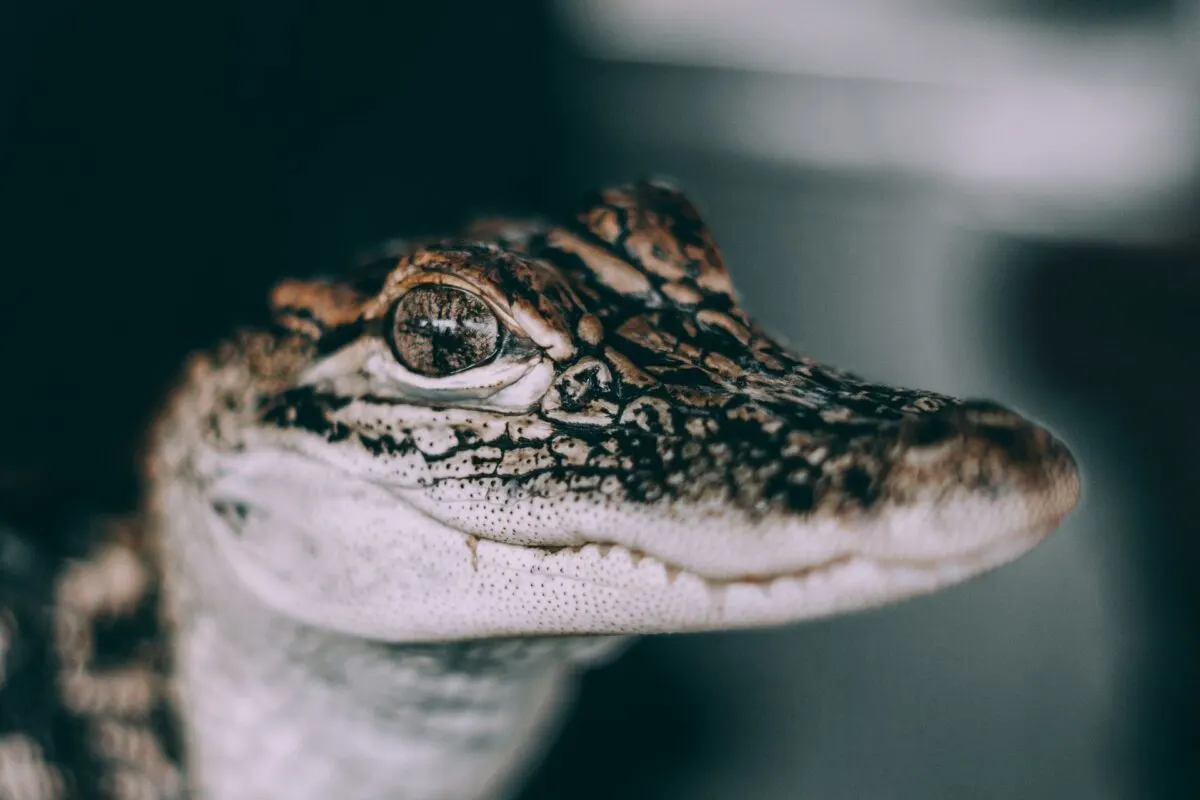Welcome to the land of alligator poop! We will dive in and discover how crucial of a role it plays in their ecosystem.
Alligators are essential to the ecosystem, and understanding their poop can provide valuable insights into their diet, health, and population. Alligator scat, commonly known as alligator poop, is more than waste material. It is a helpful tool for researchers and conservationists to learn about the animals and the environment they inhabit.
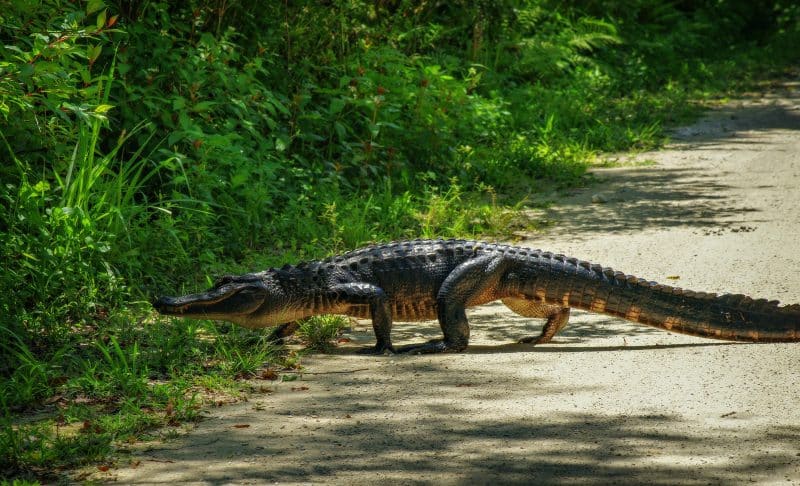
We will delve into the world of alligator poop and explore the significance of scat analysis in alligator research. Alligator scat can tell us a lot about these fascinating animals, from diet and health to population trends.
Please click to jump to a section:
Explanation Of Alligator Poop And Its Significance
Alligator poop is the feces that alligators produce. It comprises undigested food items like bones, shells, and hair. As well as other materials that won’t break down in the alligator’s digestive system.
The composition of alligator scat can reveal what the alligator has been eating and provide information on its preferred prey species, which can help understand the alligator’s impact on the ecosystem.
Analyzing alligator scat can also provide information on the alligator’s health. For example, researchers can check for parasites or diseases in the waste, which can provide insight into the population’s overall health.
Additionally, changes in the composition of alligator scat over time can indicate changes in the alligator’s diet or habitat. They are surprisingly not only meat eaters; they eat fruit as well.
Scat analysis can also provide information about the alligator population. For example, changes in the number of scat samples found in a specific area over time can indicate changes in the alligator population size.
However, alligator poop is more than waste material; it is a valuable tool for researchers and conservationists to learn about the animals and the environment they inhabit. Understanding the significance of alligator scat can aid in conservation efforts and help to protect and preserve these fascinating creatures and their ecosystem.
Composition Of Alligator Poop
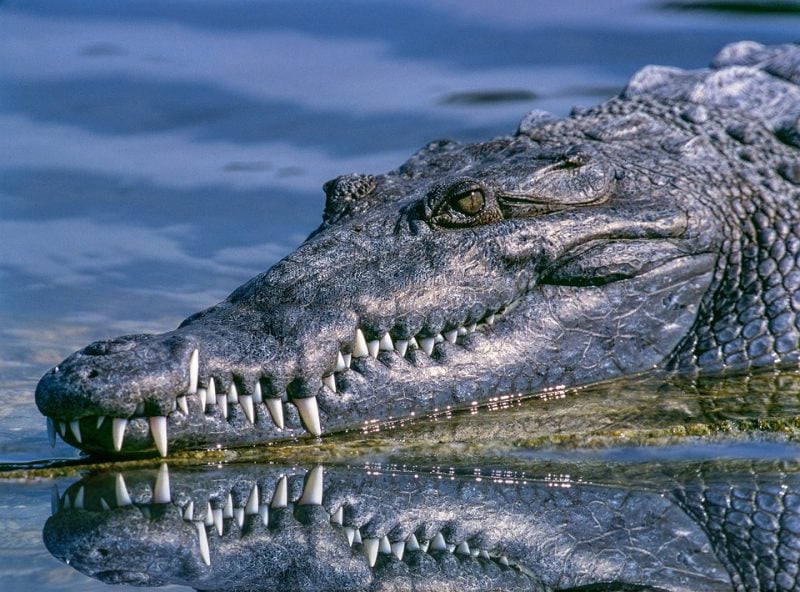
Alligator poop comprises various things. It typically contains bits of plants, such as leaves and stems, and pieces of animals that the alligator has eaten, such as fish, birds, and other small mammals.
The scat may also contain small rocks or sand, which the alligator may have swallowed while hunting or eating. Overall, alligator scat is a mixture of undigested food, feces, and other materials that the alligator has consumed.
What Alligator Poop Can Tell Us About Diet and Health
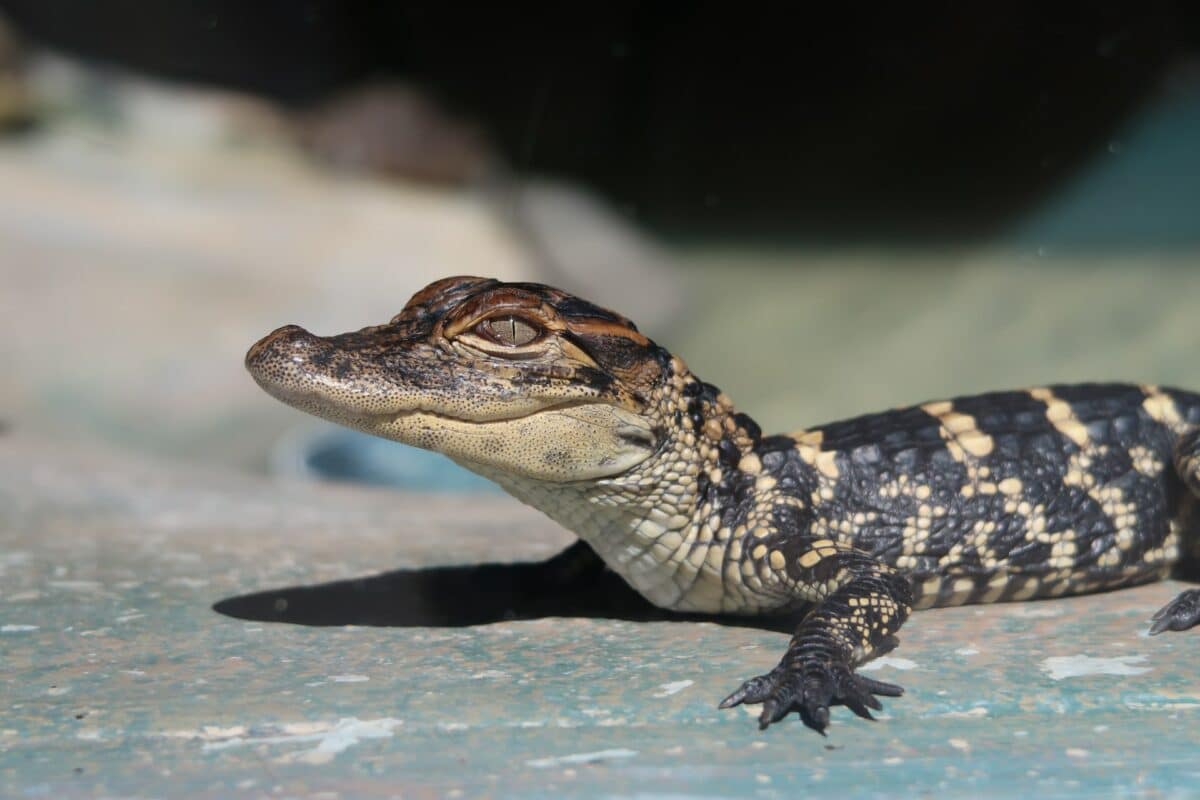
Alligator poop can tell us a lot about the diet and health of alligators. By analyzing what’s in an alligator’s scat, scientists can learn about what the alligator has been eating and how healthy it is.
Like, if an alligator’s scat contains a lot of fish bones, the alligator has likely been eating a lot of fish. It can tell scientists about the alligator’s preferred diet and hunting habits.
Similarly, if the scat contains a lot of feathers, the alligator has likely been eating birds. By analyzing the different types of feathers, scientists can even determine which specific species of birds the alligator has been eating.
Alligator scat can also contain parasites and other indicators of the alligator’s health. For instance, if the scat contains a lot of worm eggs, it may indicate that the alligator has a parasitic infection. Similarly, if the alligator’s scat is runny or includes a lot of blood, it could be a sign of a health issue.
So, alligator poop can give us a lot of information about an alligator’s diet and health, which can help us understand more about these fascinating creatures and how they live.
Learn more about the what alligator eat.
What Does The Alligator Poop Look Like?
Alligator poop looks long, and cylindrical, usually around 2-3 inches in diameter. It may be dark brown or black and can have a strong, musky odor.
Depending on the alligator’s diet, the scat can contain various materials, such as fish bones, feathers, shells, and plants. It is usually found near water sources, such as lakes, rivers, and swamps, where alligators are known to live.
How Does Alligator Poop?
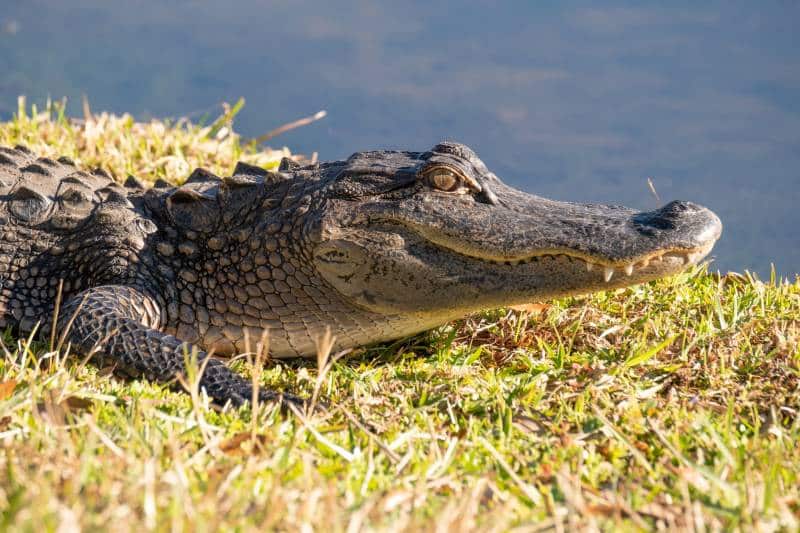
Undigested food, bacteria, and debris have passed through the alligator’s digestive system. Alligator feces are formed in the large intestine and eliminated through the rectum and anus.
The process begins with the alligator swallowing food, then moving through the stomach and small intestine, where enzymes and acids break down the food. The partially digested food then moves to the large intestine, where water and electrolytes are absorbed, and the remaining material is compacted and eliminated as feces.
Alligators have a relatively simple digestive system. Depending on the alligator’s diet, their feces are usually composed of undigested food particles, like fish scales, feathers, or shells, and other debris, such as plant material.
Once eliminated, the feces are usually deposited in or near water, as alligators are aquatic animals and spend a lot of time in or close to water. To sum up, alligators poop like most other animals, they swallow food, and then it goes through a digestive process and is finally eliminated as feces near or in the water.
Do Alligators Pee?
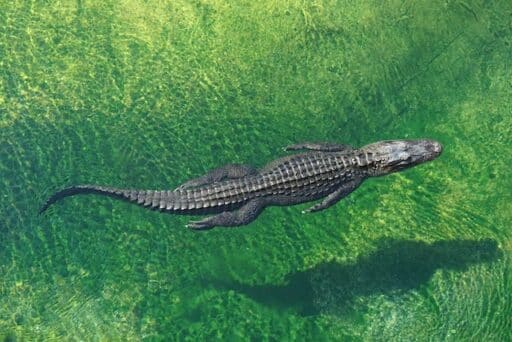
Yes, Alligators pee; like most animals, they excrete waste products in urine and feces. In reptiles, the urinary and digestive systems are combined into one organ called the cloaca, located near the tail’s base. It means that alligators excrete urine and feces through the same opening, making it difficult to distinguish between them.
The frequency of alligator urination can vary depending on several factors, such as their diet and overall health. Alligators may urinate anywhere from once a day to once a week.
It’s important to note that it is not recommended to observe an alligator’s urination habits in the wild, as it is illegal to interfere with wildlife and poses a danger to the observer and the animal.
Does Alligator Poop Smell?
Alligator poop can have a strong, musky odor. The combination of undigested food particles, such as fish or other meats, and the bacteria in the feces causes the smell. The feces of alligators can also have a strong smell due to certain chemicals, such as skatole, indole, and cadaverine, produced by the bacteria in the alligator’s gut.
These chemicals can produce a strong, pungent smell that can be noticeable even when the feces are dry. Additionally, alligator feces are also known to contain a high level of methane, which can add to the smell.
Is Alligator Poop Harmful?
Alligator poop, like the feces of most animals, is not harmful if handled correctly. However, be aware that alligator feces can carry harmful bacteria, such as Salmonella, E. coli, and Leptospira, and parasites, like tapeworms, which cause illness in other animals and humans if they come into contact with it.
It is recommended to avoid direct contact with alligator feces and to always wash your hands thoroughly after handling it or being in areas where alligator feces may be present. You should also avoid eating or drinking near alligator feces and clean any surfaces that come into contact with the feces.
It’s also worth mentioning that alligator feces can be toxic to some aquatic life and can contaminate water sources. Hence, it’s important not to dispose of it in or near water bodies.
Although alligator feces is not inherently harmful, it could contain harmful bacteria and parasites, so handling it carefully and avoiding direct contact, especially with your hands and mouth, is essential. It would also help to be cautious when disposing of it and avoid doing so near water sources.
How Often Does An Alligator Poop?
Alligators, like most reptiles, have a relatively slow metabolism, so they do not need to defecate as often as mammals do. The frequency of alligator defecation can vary depending on several factors, such as their diet and overall health. Alligators may defecate anywhere from once a day to once a week.
After eating a large meal, an alligator may defecate more frequently, as the food takes longer to digest. Similarly, if an alligator is ill or not eating enough, it may defecate less often.
It’s important to note that it is not recommended to observe an alligator’s defecation habits in the wild, as it is illegal to interfere with wildlife and poses a danger to the observer and the animal.
What Is The Difference In Between Alligator Poop And Crocodile Poop?
Alligator and crocodile poop, also known as scat, may look similar in color and shape, but there are some differences between the two.
Diet: Alligators and crocodiles have slightly different diets, with alligators tending to eat more fish and reptiles and crocodiles eating more mammals. This difference in diet can affect the composition of their feces, with alligator scat containing more fish scales and bones and crocodile scat containing more hair and bones of larger mammals.
Size: Crocodiles are generally more giant than alligators; therefore, their feces are also more giant.
Shape: Alligator feces are generally more cylindrical, while crocodile feces are more curved or spiral.
Location: Alligators live in freshwater habitats, such as swamps and marshes, while crocodiles can be found in freshwater and saltwater habitats, such as rivers and coastal areas. This difference in habitat can also affect the composition of their feces.
It’s important to note that it is not recommended to observe, touch or smell alligator or crocodile feces as it may carry harmful bacteria.
Are you interested in knowing more about Alligators vs. Crocodiles?
Methods Of Collecting And Analyzing Alligator Poop
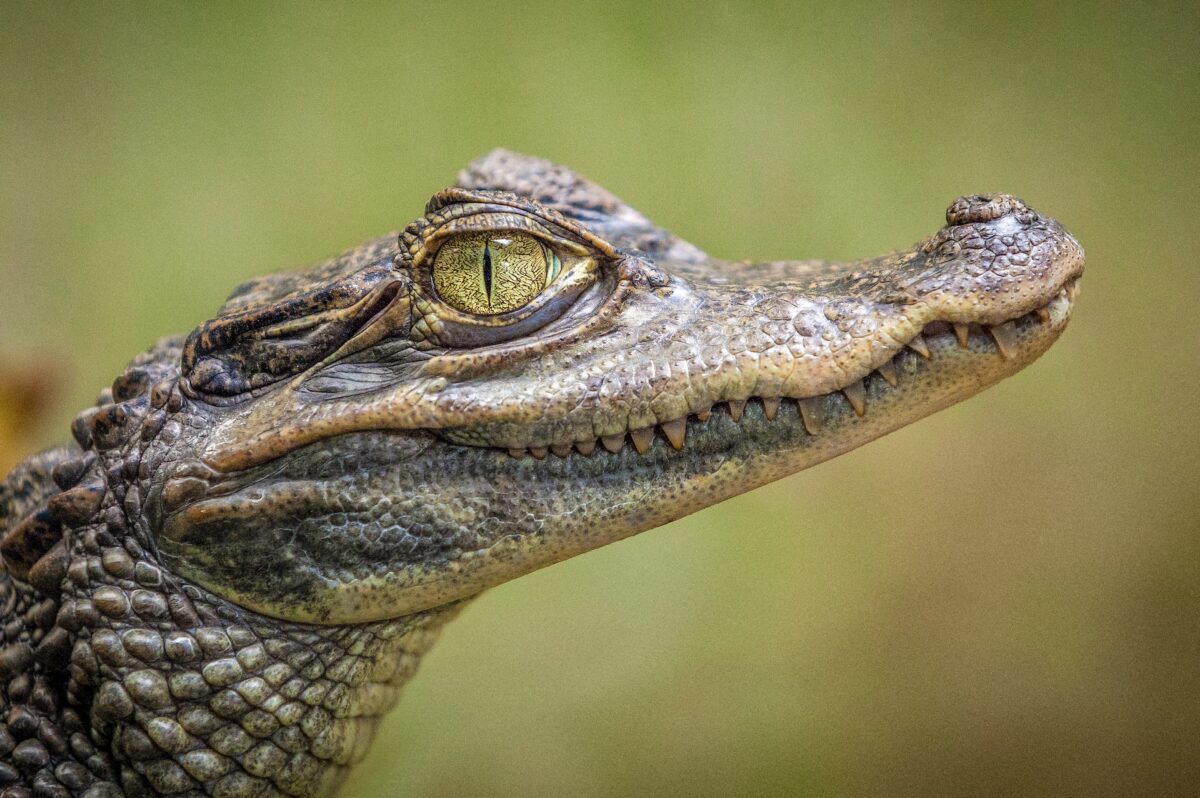
Scientists can use a few different methods to collect and analyze alligator poop.
- One standard method is to go out into the wild and look for alligator scat. Do it by walking along the shores of a lake or river. Or by searching areas where alligators are known to live. Once the scat is found, it can be collected using gloves or a plastic bag.
- Another method is to use cameras or traps to automatically monitor alligators and collect their scat. Set up cameras near alligator habitats. Check them regularly for scat or use traps to collect scat as the alligators move through them.
- Once the scat is collected, scientists can analyze it to learn more about the alligator’s diet and health. One standard method is to look at the scat and identify what’s inside. Look for things such as fish bones, feathers, or plant material.
- One method is to use microscopes or other lab equipment to examine the scat in more detail. For example, scientists can use a microscope to look at worm eggs. This can indicate a parasitic infection or DNA analysis to identify specific species of animals or plants in the scat.
Overall, there are a lot of different methods scientists can use to collect and analyze alligator scat. Each method can provide different information about alligators and their environment.
The Role Of Alligators In The Ecosystem
Alligators play an essential role in their ecosystem. They are considered apex predators. This means they sit at the top of the food chain and help control the populations of other animals.
Also, they help control the populations of invasive species. For example, in some areas, alligators eat Burmese pythons, an invasive species that can cause problems for native animals.
Alligators also play a role in shaping their environment. They create and maintain wetlands and marshes by digging and maintaining canals, ditches, and ponds, providing habitats for various animals and plants.
Moreover, alligators act as indicator species. This means that if alligators are healthy, it’s likely that the rest of the ecosystem is healthy too. If they are not, it indicates something is wrong with the environment.
In short, alligators are an essential part of their ecosystem, helping control populations and shape their environment. Their presence or absence can be an indicator of the overall health of the ecosystem.
Importance Of Alligators In Maintaining Balance In The Ecosystem
Alligators are essential in maintaining balance. They also play a role in shaping their environment. As they create and maintain wetlands and marshes. They do this by digging and maintaining canals, ditches, and ponds, providing habitats for various animals and plants. It creates a diverse ecosystem that supports many different species.
Furthermore, alligators act as indicator species, meaning their presence or absence can indicate the ecosystem’s overall health. If alligators are healthy, the rest of the ecosystem is likely healthy too. If they are not, it indicates something is wrong with the environment.
How Poop Analysis Can Aid In Conservation Efforts

Alligator poop analysis can be valuable for conservation efforts. Scientists find out what alligators eat a lot, such as a particular type of fish or bird. They can then use this information to help protect those species and ensure enough for the alligators to eat.
Similarly, suppose scientists find that alligators are infected with a particular parasite. In that case, they can use this information to help control the spread of the parasite. They can also try prevent it from harming other animals in the ecosystem.
Alligator scat analysis can also help scientists understand more about alligators’ habitats and behavior. By identifying the plants and animals in the scat, scientists can learn more about where alligators live, what they eat, and how they move around.
Moreover, scientists can use alligator scat analysis to understand the impact of human activities on alligators and their environment. For example, suppose scientists notice a change in alligators’ diet or an increase in parasites in their scat. In that case, it could indicate that their environment is becoming polluted or disturbed by human activities.
However, alligator scat analysis can be a valuable tool for conservation efforts by providing information about alligators’ diets, health, habitat, and the impact of human activities on them. This can help protect and conserve these fascinating creatures and their environment.
To find out more about where you can see alligators in the wild, you can check it out here.
Summary of Alligator Poop

Alligator poop is valuable for understanding these fascinating creatures and their environment. Through analyzing alligator scat, scientists can learn about alligators’ diet, health, habitat, and behavior and use this information to help protect and conserve these animals.
Also, if you’re interested in the tracking and signs of alligators, you can read more here.
From identifying the plants and animals found in the scat to understanding the impact of human activities on alligators and their environment, alligator scat analysis can provide valuable insights into these creatures and their ecosystem. It’s clear that alligator poop is more than just waste; it’s a vital resource for understanding and preserving these ancient animals and the environment they inhabit.
.
- Bald Eagle Family Expand Their Nest In California - April 24, 2024
- Firefighter Saves Abandoned Kittens Found Cuddling In Hoses - April 24, 2024
- Dolphins Get High Playing Catch With A Pufferfish - April 24, 2024

